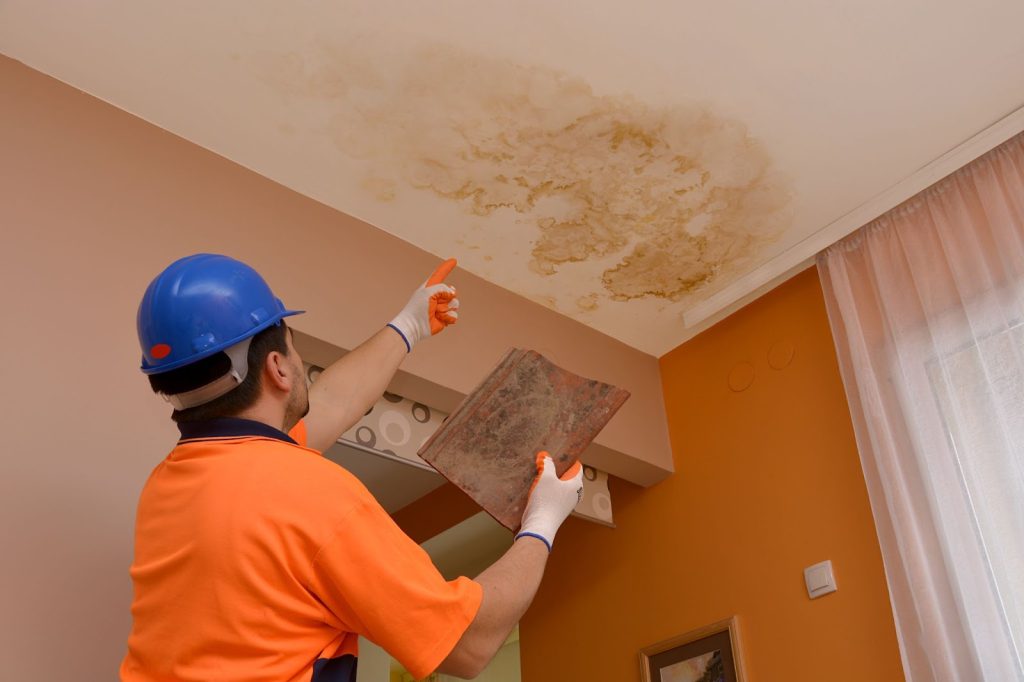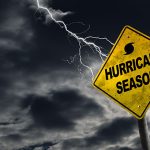What Does Water Damage Look Like? And Other Water Damage FAQs
Water damage is hazardous and is a significant risk for residential and commercial properties. In this comprehensive article, we’ll delve into the multifaceted realm of water damage, aiming to clarify how it manifests and address the frequently asked questions surrounding this pervasive issue.
Whether you are a homeowner seeking to safeguard your investment or a business owner striving to maintain the integrity of your premises, a firm grasp of water damage and its telltale signs is paramount.
What Are Common Causes of Water Damage?
Water damage stems from various sources, including burst pipes, plumbing issues, and more. It is an ever-present threat to your home’s structural integrity. Understanding the origins of water damage is paramount in ensuring timely intervention and effective water damage restoration.
Burst Pipes and Plumbing Issues
Among the most recurrent triggers of water damage are burst pipes and plumbing malfunctions. These incidents can inundate a space within moments, resulting in extensive destruction, from freezing temperatures, corrosion, excessive pressure, or aging infrastructure. Swift action is indispensable to mitigate the extent of damage and prevent further complications.
Engaging the expertise of water damage restoration specialists becomes crucial, as their proficiency in halting leaks, assessing affected areas, and expediting repairs can safeguard both property and pocket.
Roof Leaks and Structural Weakness
Inadequate roofing materials, poor installation, or severe weather events can lead to roof leaks, seeping water into the interior of a structure. Over time, this intrusion can compromise structural integrity, promote mold growth, and degrade insulation.
Detecting these vulnerabilities early and addressing them promptly can avert extensive water damage. Collaborating with public adjusters can facilitate seamless communication with insurance companies, streamlining the compensation process and expediting necessary repairs.
Flooding and Natural Disasters
Natural disasters such as floods, hurricanes, and heavy storms pose immediate and substantial threats, causing widespread water damage. Rising water levels infiltrate properties, causing irreparable harm to belongings and structures.
Investing in flood-resistant measures, such as elevation and water-resistant barriers, is prudent for properties situated in vulnerable areas. In the aftermath of such calamities, partnering with water damage restoration experts becomes invaluable.
Their experience in handling large-scale water damage scenarios, utilizing specialized equipment, and executing thorough cleanup and restoration aids in expediting the recovery process.
Appliance Malfunctions and Overflow
Modern living relies on many appliances that can malfunction and cause water damage. Dishwashers, washing machines, water heaters, and refrigerators are potential culprits when connections fail or components deteriorate.
Sudden appliance leaks and overflows can saturate floors and penetrate walls, necessitating immediate attention. Engaging in regular appliance maintenance, promptly addressing leaks, and enlisting professionals in water damage repair can preclude extensive harm and maintain the functionality of household systems.
Poor Drainage and Improper Grading
Inadequate drainage systems and improper grading of landscapes can result in water pooling around the foundation of a property. Over time, this accumulation weakens the foundation, seeps into basements, and engenders mold growth.
Addressing drainage issues by redirecting water away from the foundation, coupled with waterproofing measures, can protect against water damage. Should the situation escalate, public adjusters proficient in assessing damages and advocating for equitable insurance claims can facilitate financial support, easing the burden of restoration costs.
What Does Water Damage Look Like?

Quickly noticing the signs of water damage will save you lots of time and money. The ability to promptly identify these signs allows for timely intervention. It aids in mitigating the need for extensive water damage restoration, involving skilled professionals in water damage repair and, when necessary, collaboration with public adjusters for a smoother claims process.
Discoloration and Stains on Walls and Ceilings
One of the initial visual cues of water damage is the emergence of discolored patches or stains on walls and ceilings. These unsightly blemishes often signal leaks or seepage that have permeated building materials.
Ignoring such marks can lead to the degradation of paint, plaster, and drywall, further exacerbating the damage. Quickly investigating the source of these discolorations and working with water damage restoration experts can mitigate the problem.
Mold Growth and Musty Odors
The presence of mold not only indicates existing water damage but also poses a significant health hazard to occupants. Mold thrives in damp environments, making it a common aftermath of untreated moisture intrusion. Alongside visual cues, the distinct musty odor of mold is often a reliable sign of its growth.
Addressing mold promptly requires the expertise of professionals specialized in mold remediation and water damage restoration. Their comprehensive approach ensures not only the elimination of existing mold but also the prevention of future outbreaks.
Warping and Buckling of Materials
Water’s capacity to infiltrate building materials can lead to warping, buckling, or swelling of surfaces, including floors, walls, and cabinets. This distortion not only compromises the space’s aesthetic appeal but also threatens its structural integrity.
Recognizing these physical changes is pivotal in engaging water damage repair professionals with the expertise to assess the extent of damage and execute the necessary repairs. Their intervention ensures the preservation of the property’s value and functionality.
Damp or Soggy Flooring
Flooring materials, particularly wood and laminate, are susceptible to water damage. When exposed to moisture, these materials may feel damp or soggy to the touch. Such conditions can lead to warping, rot, and the fostering of mold growth.
Unexplained Increase in Utility Bills
Monitoring utility bills can serve as an indirect indicator of water damage. An unexplained rise in water consumption and subsequent utility costs may signify an undetected leak or infiltration.
Recognizing these fluctuations and conducting a thorough inspection can unveil hidden issues and prevent escalating damage.
What Does the Water Restoration Process Look Like?
The water damage restoration process is a comprehensive and multifaceted endeavor to salvage properties from the perils of moisture intrusion.
Whether the result of a minor leak or a major flood, enlisting the expertise of professionals in water damage restoration is paramount in ensuring a thorough and effective recovery.
Water Extraction and Drying
The first and foremost step in the water damage restoration process is the swift removal of excess water. Water damage restoration professionals efficiently extract standing water from the affected area by utilizing specialized equipment such as pumps, vacuums, and dehumidifiers.
Following this, thorough drying of the space ensues, utilizing advanced techniques to evaporate residual moisture from surfaces and materials. This pivotal phase minimizes the risk of mold growth, structural damage, and further deterioration.
Mold Remediation and Sanitization
Water damage often gives rise to mold growth, posing health hazards and exacerbating property damage. During restoration, meticulous mold remediation procedures are used to eliminate existing mold colonies.
This involves thorough cleaning, disinfection, and the application of anti-microbial agents to prevent future infestations. These measures contribute to the health and safety of occupants and ensure the restoration’s longevity.
Repairs and Reconstruction
The aftermath of water damage may necessitate repairs and reconstruction to restore the property to its pre-damage state. Water-affected materials, such as drywall, flooring, and insulation, may need to be replaced.
Skilled professionals in water damage repair evaluate the extent of damage and employ their expertise to execute precise repairs and reconstructions. This phase not only rejuvenates the aesthetic appeal of the space but also reinforces its structural integrity.
Preventative Measures for the Future
As a proactive measure, the water damage restoration process includes recommendations for preventing future occurrences. Experts may advise improving drainage systems, enhancing ventilation, and incorporating water-resistant materials. These preventative measures reduce the likelihood of recurring water damage, safeguarding the property against potential risks.
Role of Public Adjusters
Navigating insurance claims after water damage can be complex and overwhelming. Public adjusters, who are professionals experienced in assessing property damage and advocating for equitable insurance settlements, can prove invaluable.
Their expertise in interpreting insurance policies, documenting damages, and negotiating with insurance companies streamlines the claims process. Collaborating with public adjusters ensures that property owners receive the compensation necessary for effective water damage restoration and repair.

Navigate Your Water Damage Restoration Claim With Hudson Douglas
Are you grappling with the intricate process of handling insurance claims following water damage to your property? Let Hudson Douglas Public Adjusters stand by your side.
With an extensive background spanning five decades in disaster recovery and property restoration, our team possesses the expertise, resources, and advanced technology to facilitate a prompt and equitable resolution for your insurance claims.
Contact Hudson Douglas today at 480-320-9580, and let us guide you toward the resolution you deserve.




